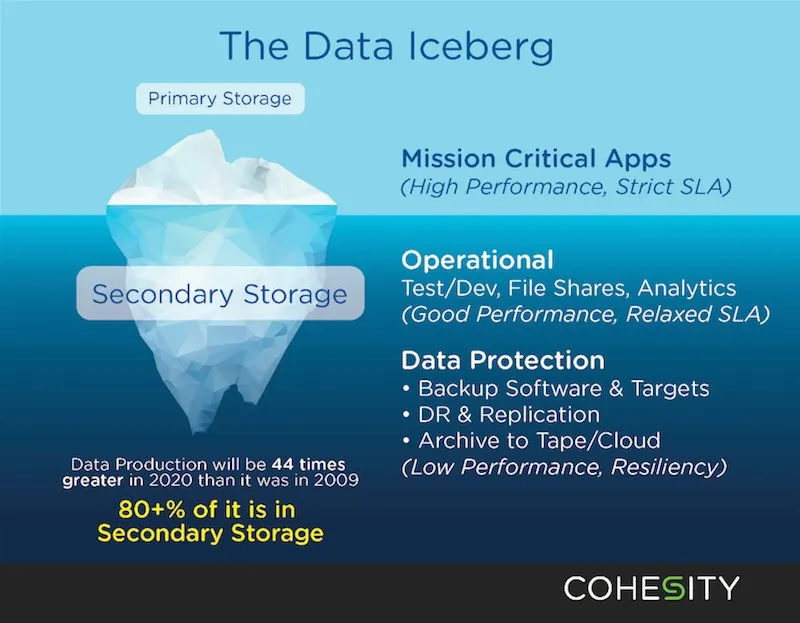Indian founded Cohesity emerges from stealth mode with $70M funding to disrupt secondary storage market
Coming out of stealth mode after two years since inception, coupled with two massive rounds of funding totaling to $70million that’s Cohesity for you. Founded by an Indian, Mohit Aron, Cohesity intends to redefine the way we think and operate with secondary storage - including data protection, archival, DevOps and analytics on an infinitely scalable and intelligent monolith platform. Cohesity’s new solution will reduce costs, simplify management, and deliver powerful data insights to customers. Sounds like a humongous goal, but Mohit claims he and his team have the knowledge and expertise to make this happen – and the huge amount of funding seems to validate that.

Before starting Cohesity Mohit co-founded Nutanix, a $2Billion+ startup now, where he championed the concept of hyper-convergence, a first of its kind architecture to converge compute and storage to simplify virtualization. He was also involved in designing the Google File System that provides massive efficiencies for the search giant’s primary storage tasks. And more than 25% of existing Cohesity team of 50 come with Google pedigree.
Started in June 2013 in Santa Clara, Cohesity raised their first round of funding of about $15million Series A barely six months into existence from Sequoia Capital and Wing Venture Capital. And now a massive $55million Series B round led by ARTIS Ventures and Qualcomm Ventures along with Accel Partners, Battery Ventures, Google Ventures, and Trinity Ventures.
Speaking on the existing problem and opportunity, Mohit shares - “While working at Nutanix I realized that primary storage, for which we were building solutions for, was just the tip of the iceberg and what lies below is this massive opportunity in the secondary storage space. Large corporations were spending billions of dollars on data protection as insurance policy and had to deal with challenges of copy and workflow management that comes along with it - that’s a lot of fragmentation and overspend. Secondary storage makes up over 80 percent of an organization’s data — it’s where the majority of data goes to die today, so it’s exactly the right place to run data analytics, transforming the value of this previously passive data.”

According to CSC Research, today’s organizations face a tsunami of new data that will be 44 times greater in 2020 than in 2009. More than 80 percent of this data will be spread across a wide range of secondary storage solutions designed specifically for backup, development, or analytics. This results in large masses of “dark data,” defined by Gartner as “the information assets organizations collect, process, and store during regular business activities, but generally fail to use for other purposes.” The proliferation of highly specific storage products compounds the growing “dark data” problem by making it more expensive to store, more complex to manage, and harder to mine for valuable business insight.
“With Cohesity, we can illuminate the massive amount of ‘dark data’ residing in secondary storage and help organizations derive meaningful insights and intelligence from it,” says Mohit.
Imagine if you want to dig deep into your product’s life cycle. You will have to skim through thousands of lines of code just to check whether any of your developers has stored credit card information in an unencrypted format. Now imagine doing that over hundreds of data backup and archival systems. That’s where Cohesity comes into play; to provide seamless Google-like searches and insights into stored data and file information across your secondary storage. Cohesity has already been working with few pilot customers, like Tribune Media and GS1 Canada, as part of their Early Access Program. They have been able to dramatically simplifying their secondary storage implementation.
As an initial launch price, each Cohesity appliance costs about $100,000 and consists of a four-node cluster server with 96TB of hard disk storage and 6TB of SSD storage. That’s a massive amount of compute and storage combined into one solution.
Mohit believes providing analytics and insights into ‘dark data’ will make their solution compelling for their customers. And he has already got Apurv Gupta, again an ex-Googler, onboard to build analytics solutions and head the India Engineering team. Apurv had previously co-founded Arkin Net, a one of its kind operations platform for converged infrastructure and software-defined data centers with Google-search like experience.
Speaking about the analytical solution, Apurv says – “The first and basic feature is to provide customers with the ability to search for any particular file across the backup data archive. The next would be to give them the tools to analyze their own data themselves.”
“On the Analytics front, our first approach is to provide insights into what we already know is useful for our customers, like basic file search query. Next, we want to expose APIs to customers, so that they can build custom applications based on their needs, using our solution. And finally, we want to provide support to integrate with full-scale analytics distribution like Cloudera,” Mohit adds.
The Cohesity appliance is scheduled to be GA around late Q3-early Q4 of 2015. The team is looking at boosting their customer base from 5 currently, to about 25 by GA. Mohit is scheduled to visit India next month to focus on India expansion plans, both from a hiring and business perspective.
“India has always been a late adopter of new technologies and solutions, and it’s about time we change that. At Cohesity, we are not only focusing on the West and developed economies as potential markets, but we also see huge opportunity in India to market and sell our solutions.” shares Mohit as a concluding remark.







